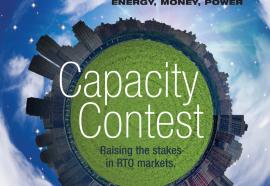Vendor Neutral
(June 2011) Duke and ATC team up to build transmission lines; AEP installs bioreactor to control selenium emissions; NextEra buys 100 MW of wind from Google; Ocean Power Technologies awards contracts for wave power array; Kansas City picks Elster; BC Hydro picks Itron; plus contracts and developments involving Tres Amigas, Ioxus, Opower and others.








